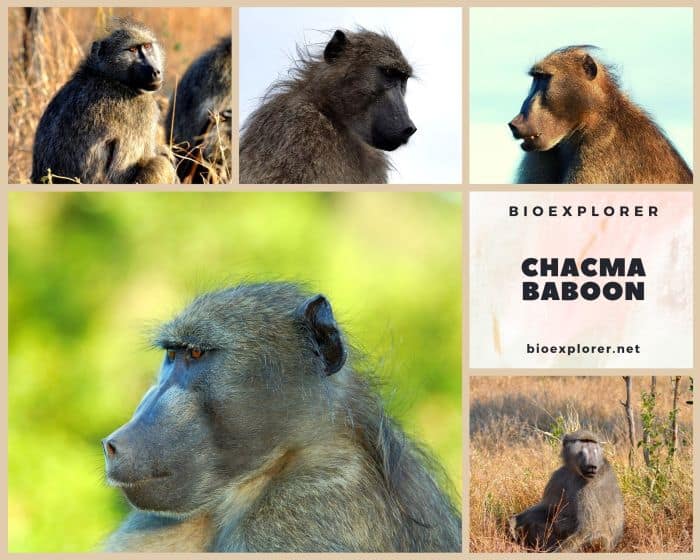
| Animalia | Primates | Cercopithecidae | Papio | Papio ursinus |
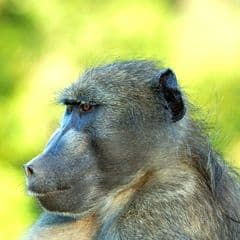

- Common Name: Chacma Baboon
- Taxonomy Classification Year: 1792
- Monkey Size: 50.8 to 114.3 cm (20.00 to 45 in)
- Skin Color(s): Light gray or dark olive-brown
- Habitat: Scrub forest, chaparral, savanna or grassland
- Diet: Omnivorous
- Native Countries: Angola, Botswana, Mozambique, Namibia, South Africa, Zambia
Chacma Baboon Distribution
Chacma Baboon Characteristics
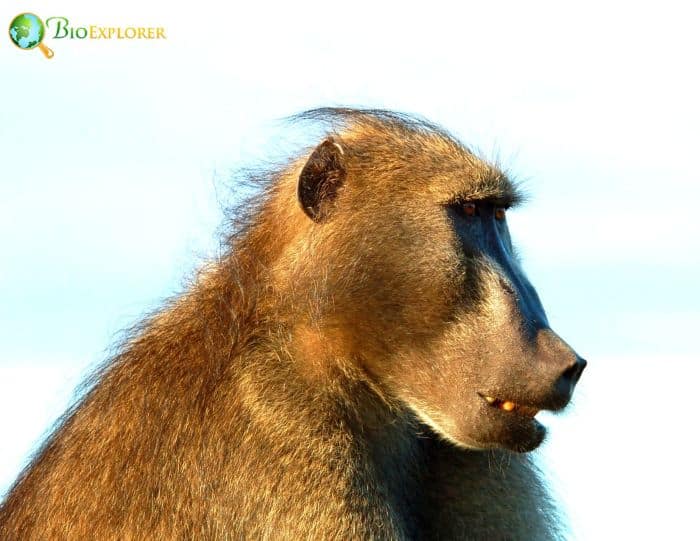
Like all other baboons[1], the Chacma baboon, the Cape baboon, belongs to the Old-World monkey family.
- It’s among the largest of all monkeys. These large primates have a dog-like snout and large, distinctive canines (females have smaller canines).
- Chacma baboons have a narrow upper face and large skulls. Also, they have long limbs and a relatively short tail.
- These species have short, thick hair. Unlike their relatives (like Guinea baboons, Hamadryas, and Anubis), they don’t have manes but only have small tufts or clumps of hair around their faces.
- Males tend to grow these clumps of hair tight around their necks. The fur of Chacma baboons can range in color from dark olive brown to light gray.
- Their feet, hands, limbs, and back are typically covered with darker hair (e. g., dark brown or black).
- Their snout and underparts are brown and tan. Also, Chacmas have a dark purple-black face. In general, the color of their hair is very different.
What Do Chacma Baboons Eat?
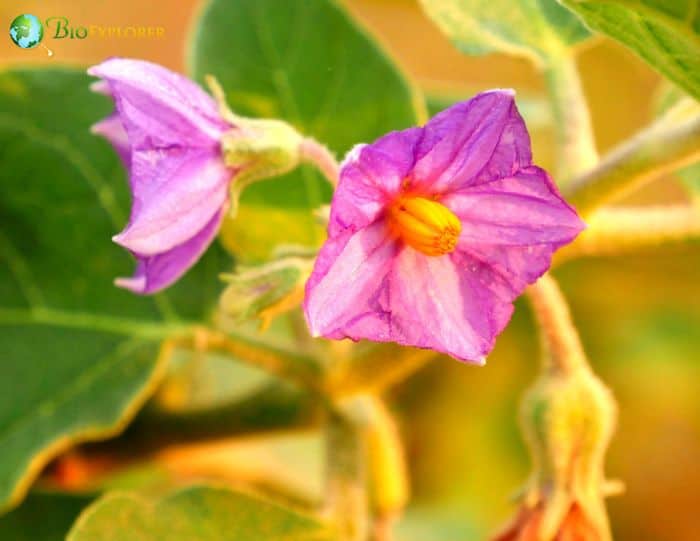
Being omnivorous, the Chacma Baboon nourishes on many food sources including[¶]:
- Répteis (Reptilia)
- Arthropodes (Arthropoda)
- Hexapoda (Insecta)
- Birds (Aves)
- Mamífero (Mammalia)
- Nightshade (Solanum um incanum)
- Persimmons (Diospyros)
- Tamarind (Tamarindus indica)
- Aroma (Dichrostachys cinerea)
- Spiny Jackal Berry (Diospyros senensis).
- Apon-Apon (Pistia stratiotes)
- Snake Bean Plant (Bobgunnia madagascariensis).
- Gum Arabic Tree (acaciaia nilotica).
- Rigid Star Berry (Diospyros squarrosa).
- Milkwood (Tabernaemontana)
- Sycamore Fig (Ficus sycomorus).
- Spurge (Euphorbia)
- Flatsedge (Cyperus)
- Vegetable Ivory Palm (Hyphaene petersiana).
- Jamestown Weed (Datura stramonium).
- Angel’s Trumpet (Datura inoxia).
What Eats Chacma Baboons?
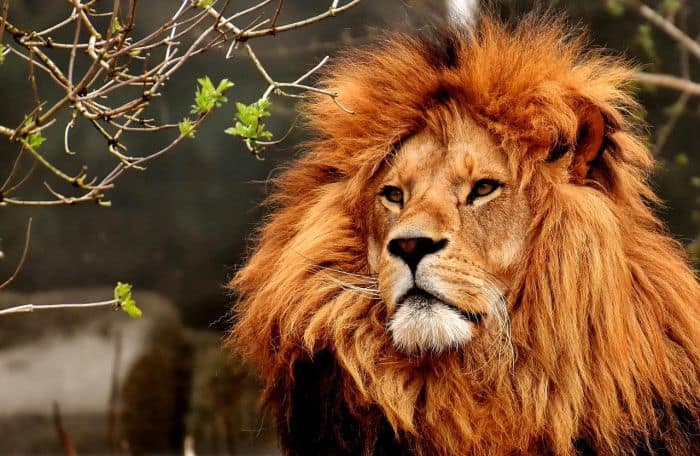
Leopards (Panthera pardus), Lions (Panthera leo), Black-Backed Jackals (Canis mesomelas) and Brown Hyenas (Hyaena brunnea) are the main predators of Chacma Baboons[§].
Chacma Baboon Facts
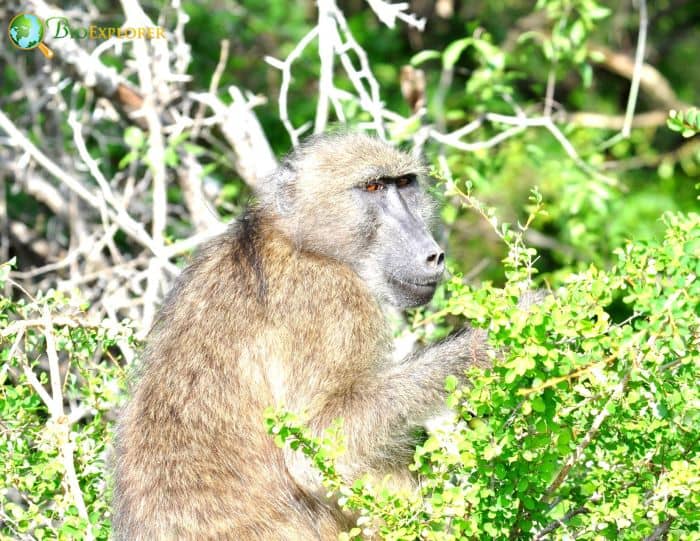
- Chacma baboons have a habit of flipping over rocks in search of food. So, it’s pretty easy to spot where a group of Chacmas once foraged.
- In arid areas like Namibia, chacmas can survive without water for up to 20 days by eating food with high water content.
- They are terrestrial and quadrupedal primates. When they run, their style resembles the gallop of a horse.
- Grooming is a vital social activity that strengthens the relationship between a family group. Male-female grooming is used during grooming and courtship.
- Aggressive alpha males will resort to infanticide, killing baby baboons still dependent on their mother for milk. Therefore, women make friends with men to reduce this risk.
Suggested Reading: Explore Old-World and New-World Monkeys
Cite This Page
APA7MLA8Chicago
BioExplorer.net. (2025, December 29). Chacma Baboon. Bio Explorer. https://www.bioexplorer.net/animals/mammals/monkeys/chacma-baboon/.
BioExplorer.net. "Chacma Baboon" Bio Explorer, 29 December 2025, https://www.bioexplorer.net/animals/mammals/monkeys/chacma-baboon/.
BioExplorer.net. "Chacma Baboon" Bio Explorer, December 29 2025. https://www.bioexplorer.net/animals/mammals/monkeys/chacma-baboon/.











